This is the seventh post in a series of tests of the Fujifilm GFX 100, Mark II, which was released this week. You can find all the posts in this series by going to the Categories pane in the right hand panel and clicking on “GFX 100 II”.
We saw in the preceding post that the GFX 100 II isn’t doing a straight 14-bit linear conversion in Continuous High drive mode, even with the putative precision set to 14 bits. I wondered about the read noise in that mode. I ran a series of dark-field tests, where I exposed images of the back of the body cap at various ISO settings. I measured the read noise of each raw channel and converted it to one of the definitions of engineering dynamic range by dividing full scale on the camera by the read noise.
First, for mechanical shutter, where CH mode yields 8 fps frame rate.
At base ISO, we’ve lost about a stop of dynamic range at base ISO, less at the higher ISOs, and not much at all at the nosebleed ISOs. Here’s what it looked like in single shot mode with EFCS.
I”m surprised that the ISOs between 500 and 10000 are affected so much.
With electronic shutter.
ES looks pretty much the same as MS.
Base ISO and ISO 100 raw channel spectra:
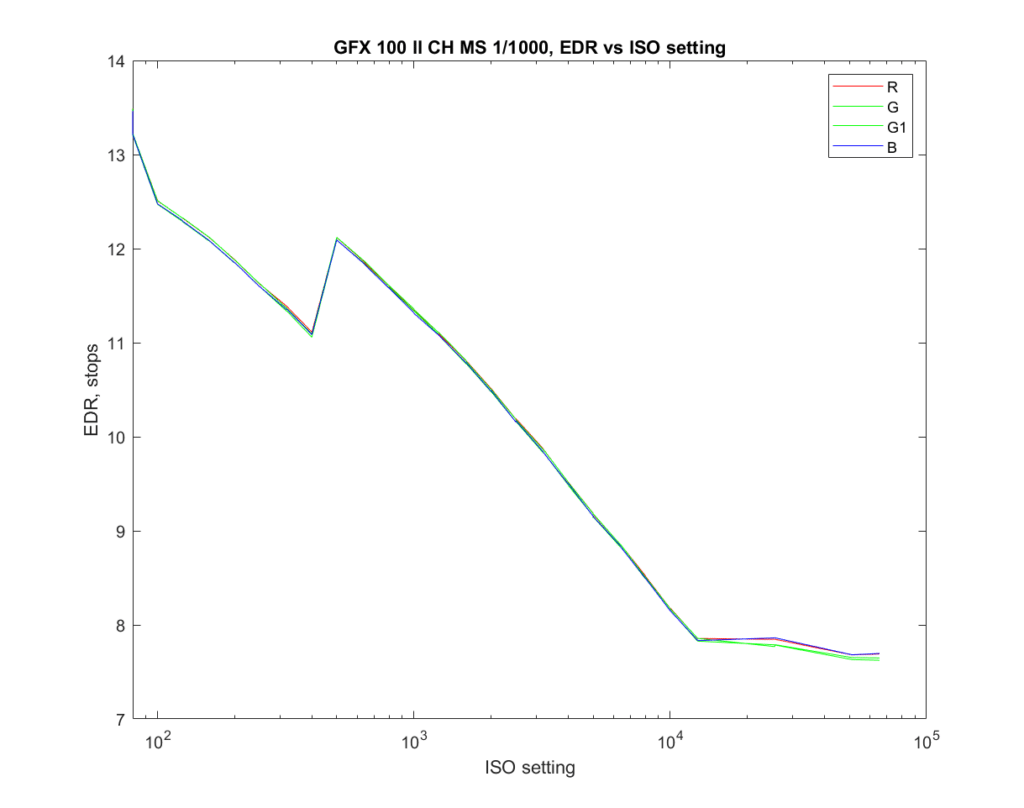
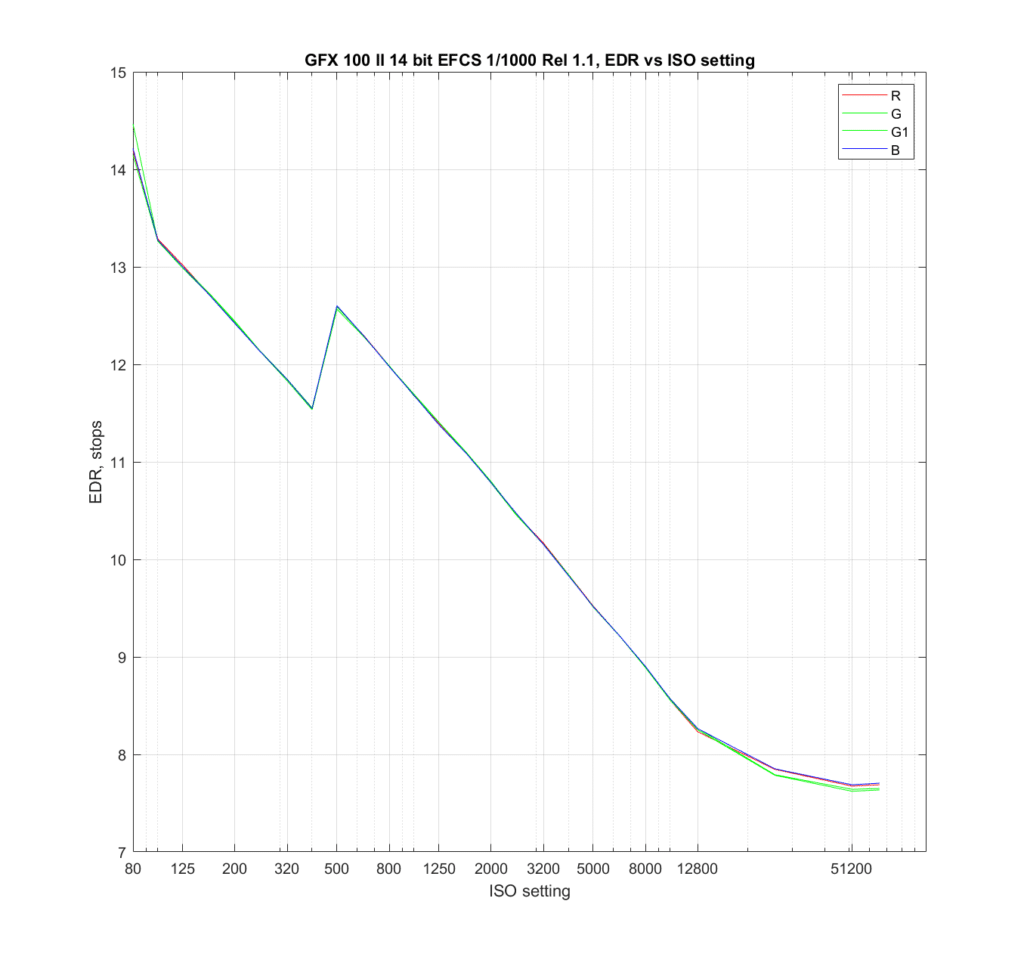
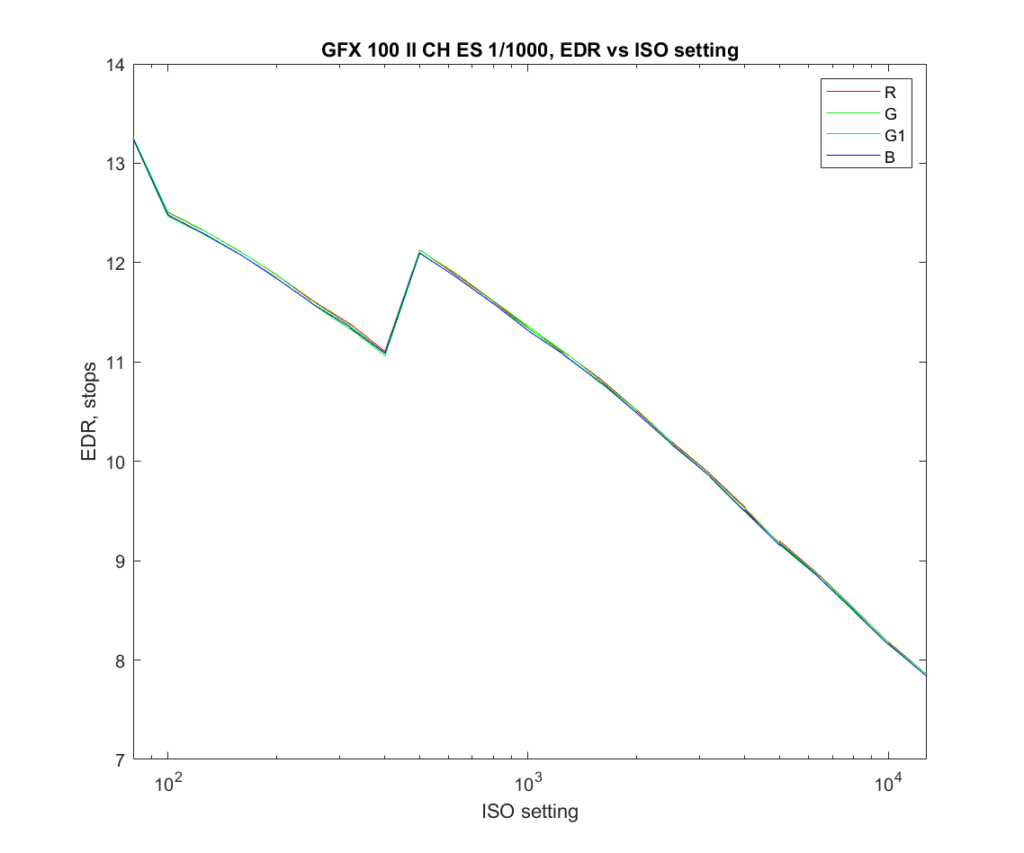
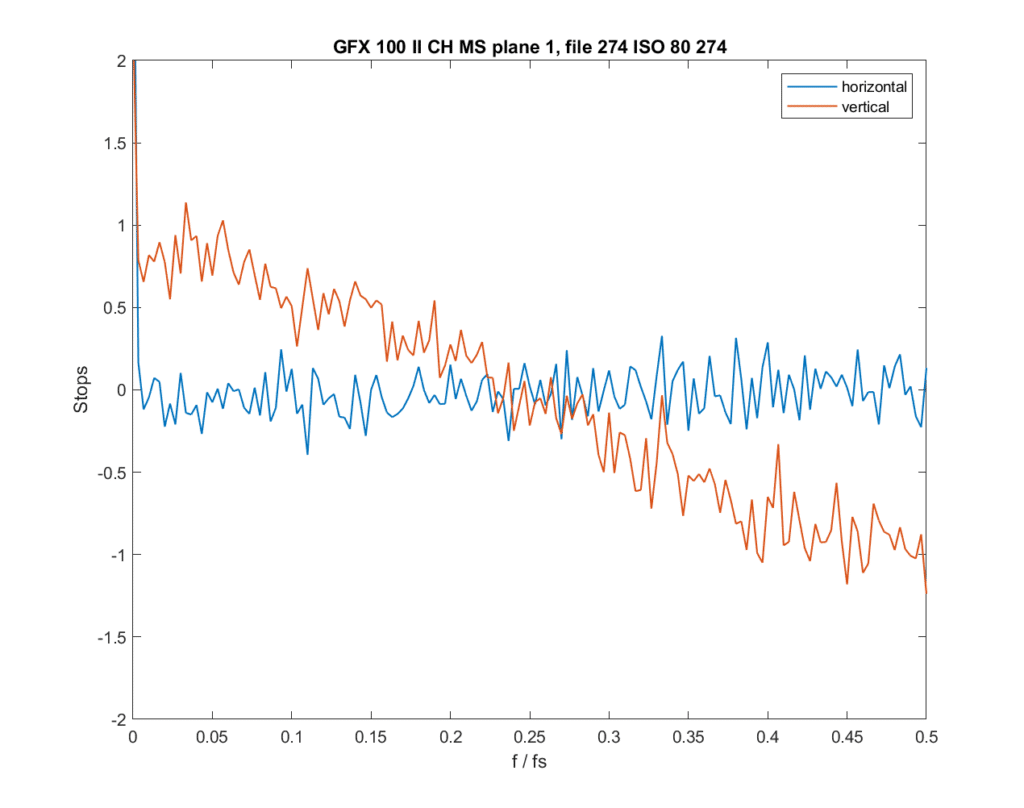
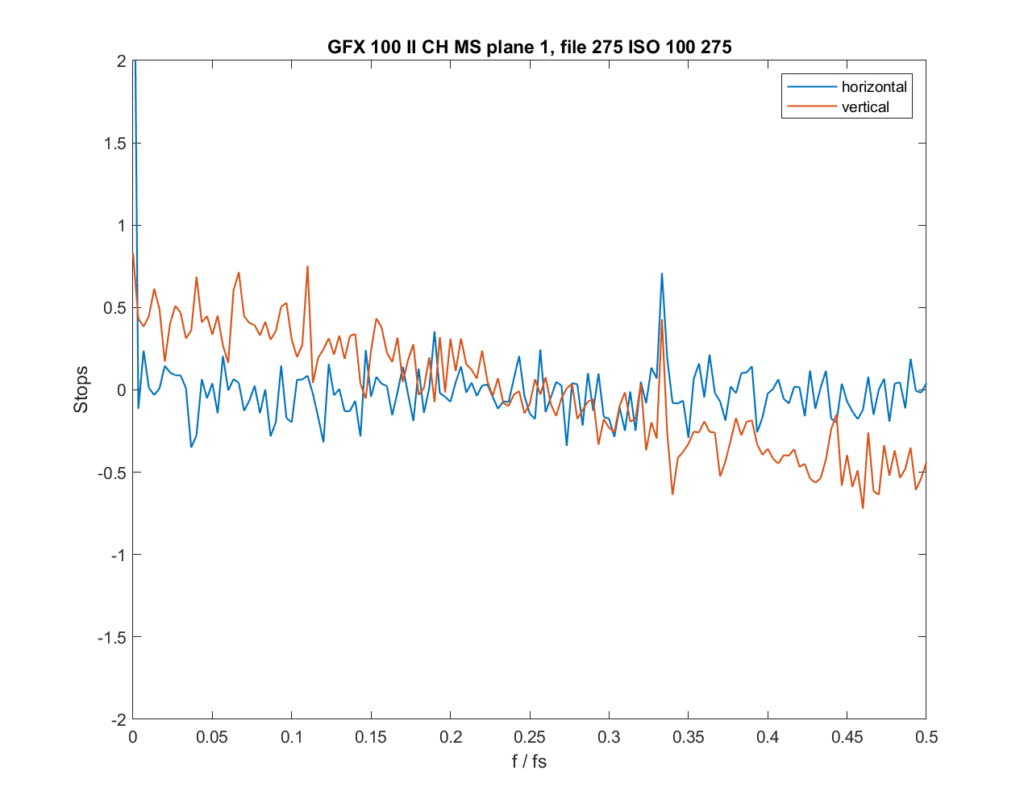
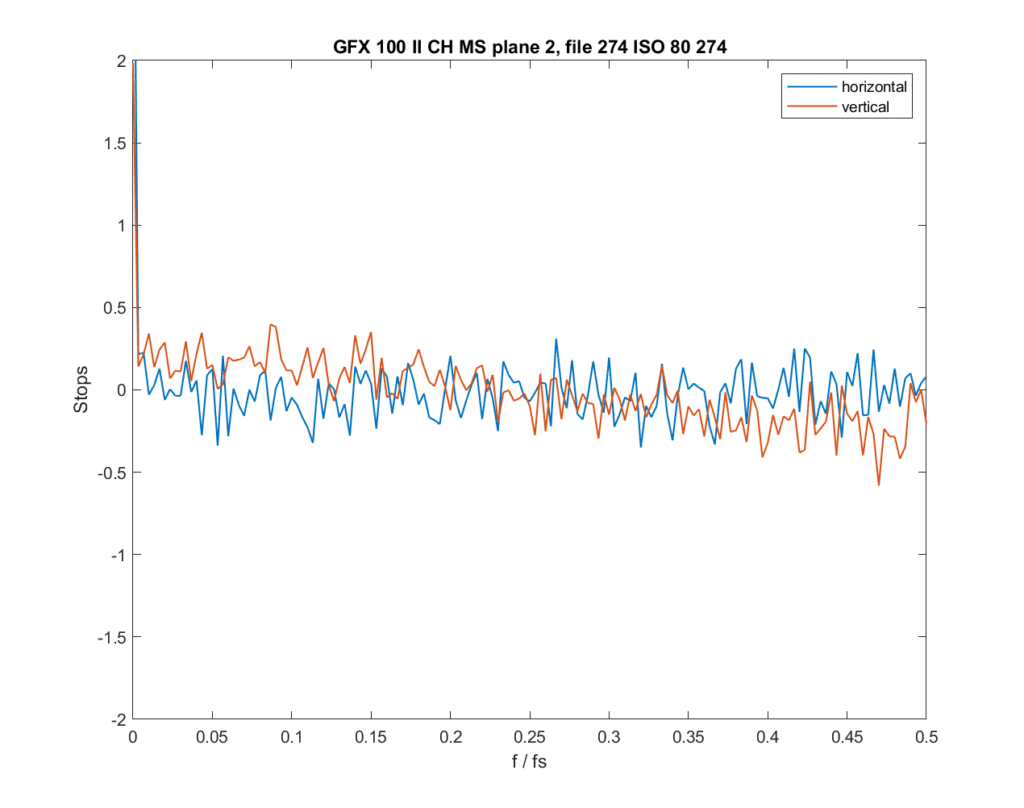
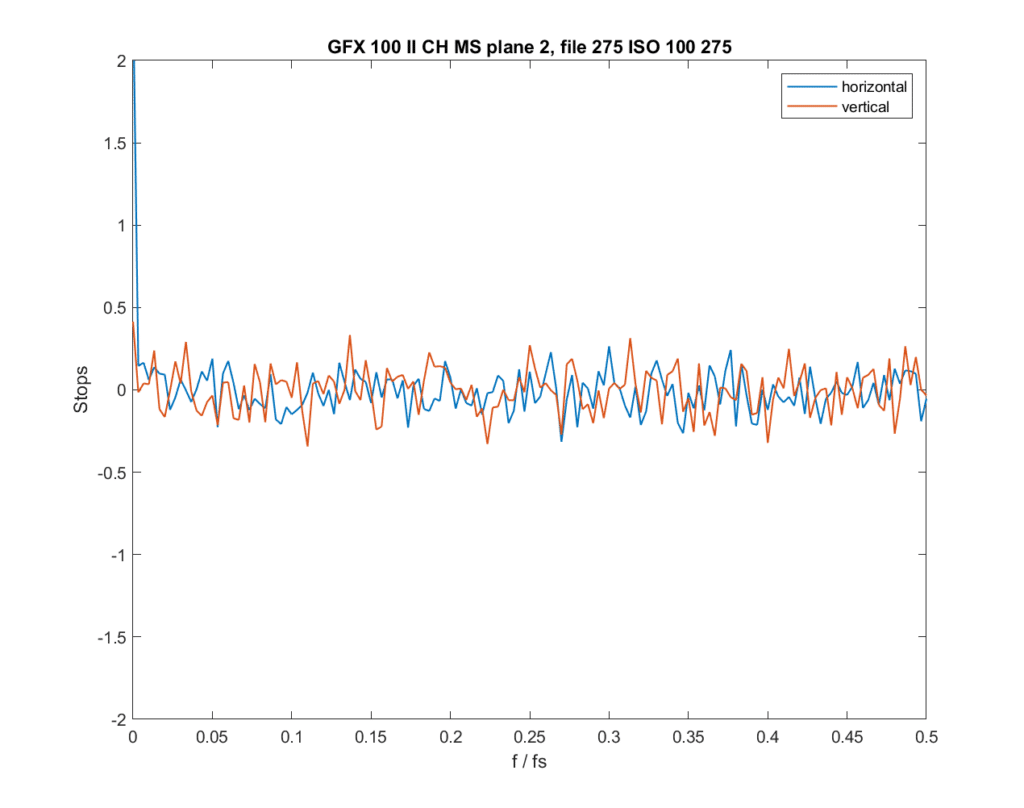
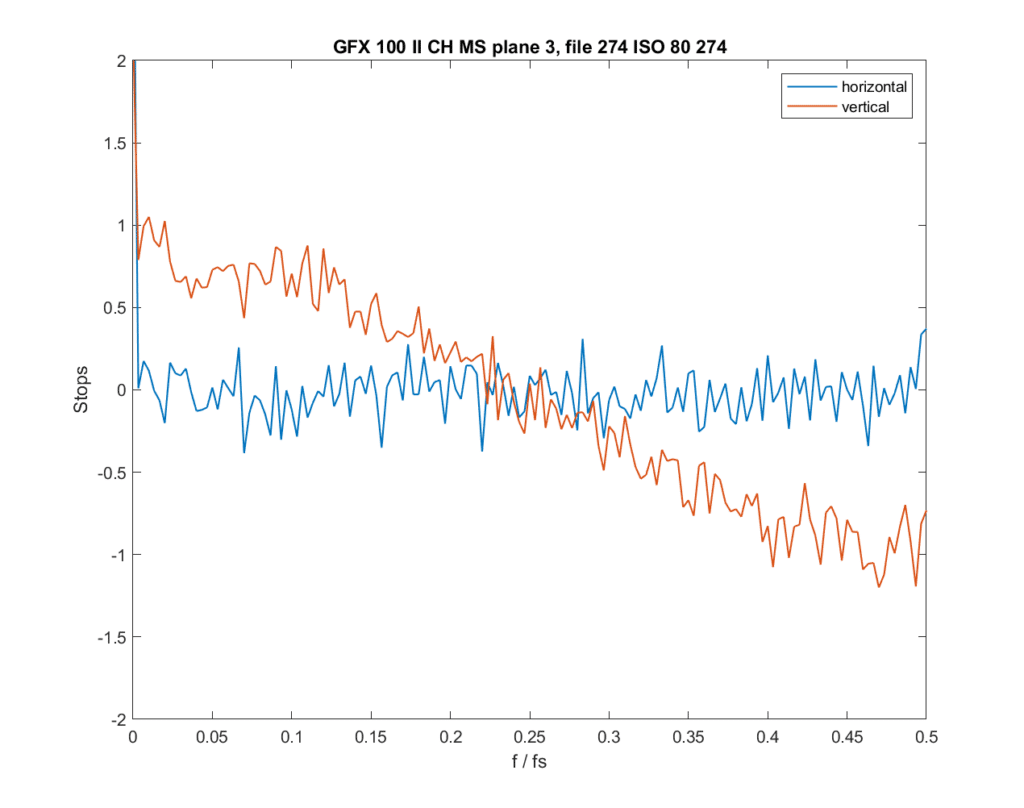
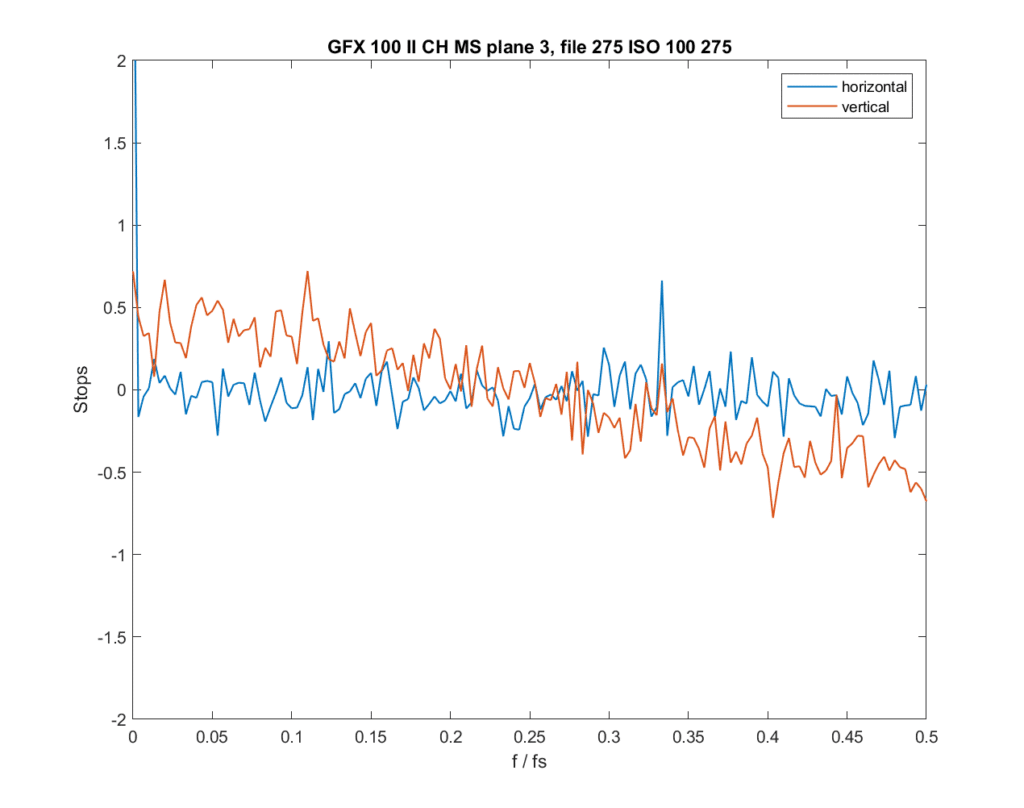
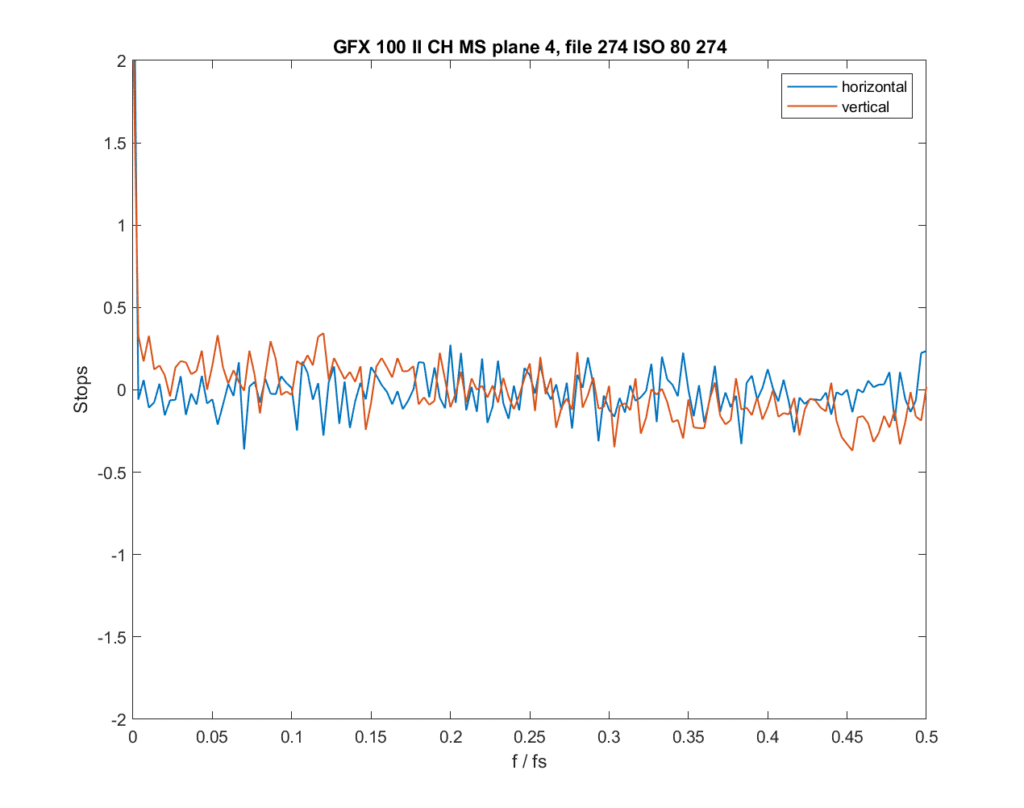
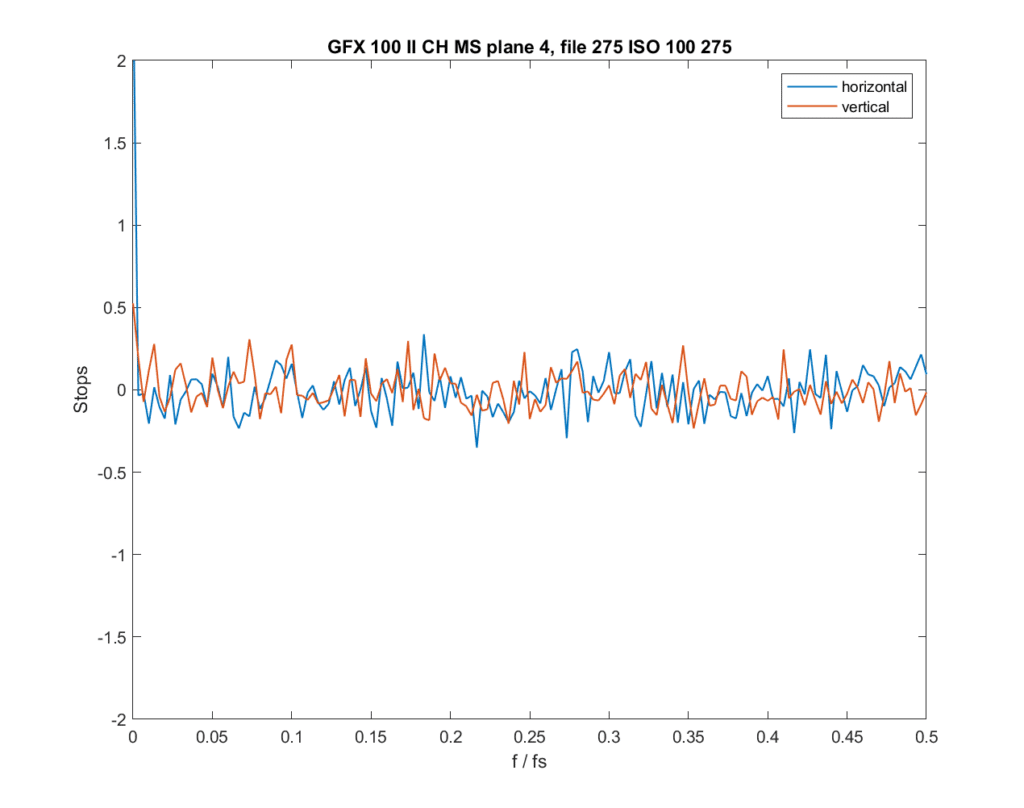
Erik Kaffehr says
Thanks for sharing your results.
I would think it may be helpful to see single shot and continuous and single shot results plotted in the same graph.
Brandon says
I believe we (you) saw the same pattern with Sony A9 (original), where higher drive modes resulted in a decrease in bit depth. It’s good to know, but can’t say it’s surprising given the amount of data that needs to be read off the sensor.
Dam says
Hello, many thanks for all the work and the findings, you are the only one revealing this on the web. Kudos to that.
I would like to have a synthesis of your findings all in one post regarding the processing and quantization. I have trouble coming to clear conclusions and browsing through all the 30 posts doesn’t help. Some questions for example :
What are the real precision of reading specs when : MS, ES, EF, shutter type are used? regardless of continuous shooting modes?
If I choose 16 bits precision raw, I know I am fine with MS, but what about ES/EF? Does it drop to 12 bits? 14 bits? (single frame shooting)?
Are there differences between CH and CL in terms of reading precision/quantization? I understand that CH is 12 bits all the time, but is CL the same?
Finally what are the guidance that we can take out of this? What are the takeaways for the users?
For example, on the R5 i have looked at the data when using Electronic shutter (12 bits reading) and MS or EF (same 14 bits precision), I know that I have a dynamic range advantage staying below 800/1000 isos in mechanical shutter or Electronic front shutter (14 bits), however, if for whatever reason i need to go beyond 800/1000 isos, Mechanical shutter in 14 bits, and electronic shutter in 12 bits yield the same DR and noise level, so I can switch to full electronic shutter and enjoy both the silence and higher frame rate in continuous shooting mode without impact on my image quality comparing to MS shutter.
This is the kind of guidance that I am looking for, Fuji really disappoint in their user manual, and your work just open a door that has been locked so far.
I hope you can help on this as you did opening the locked door.